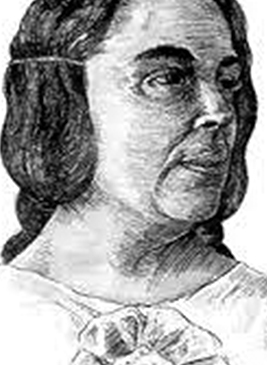María de zayas y sotomayor
María de zayas poems
María de Zayas brings to the short story genre a series of characteristic features such as: giving prominence to the extraordinary or fantastic element, recreating violent scenes, giving importance to the erotic component with special attention to female sexual desires and, above all, avoiding happy endings that culminate in marriage. Her novels tend to see marriage as the beginning of an unhappy life for women, who must face a society hostile to their gender; that is, Zayas’s narratives refute or «distort» the ideology underlying the Baroque short novel (Zayas 2010, 36).María de Zayas and the defense of women
We should not forget that Zayas’s perspective is that of the well-to-do and aristocratic class; in that sense, her traditional view of society has been discussed. As Alicia Yllera exposes, the author attacks certain prejudices, but defends the value of honor and blames men for endangering the good name of noble women (educated in physical and moral vulnerability): Zayas
María de zayas novelas amorosas y ejemplares summary
María de Zayas brings to the genre of the short story a series of characteristic features such as: giving prominence to the extraordinary or fantastic element, recreating violent scenes, giving importance to the erotic component with special attention to female sexual desires and, above all, avoiding happy endings that culminate in marriage. Her novels tend to see marriage as the beginning of an unhappy life for women, who must face a society hostile to their gender; that is, Zayas’s narratives refute or «distort» the ideology underlying the Baroque short novel (Zayas 2010, 36).María de Zayas and the defense of women
We should not forget that Zayas’s perspective is that of the well-to-do and aristocratic class; in that sense, her traditional view of society has been discussed. As Alicia Yllera exposes, the author attacks certain prejudices, but defends the value of honor and blames men for endangering the good name of noble women (educated in physical and moral vulnerability): Zayas
Novelas amorosas y ejemplares maría de zayas
Este artículo incluye una lista de referencias generales, pero no está verificado porque carece de las correspondientes citas en línea. Por favor, ayude a mejorar este artículo introduciendo citas más precisas. (Febrero de 2008) (Aprende cómo y cuándo eliminar este mensaje de la plantilla)
María de Zayas y Sotomayor (12 de septiembre de 1590 – 1647 o 1661) escribió durante el Siglo de Oro de la literatura española. Varios críticos modernos la consideran una de las pioneras del feminismo literario moderno, mientras que otros la consideran simplemente una autora barroca bien lograda. Los personajes femeninos de las historias de Zayas se utilizaron como vehículos para ilustrar a los lectores sobre la difícil situación de las mujeres en la sociedad española, o para instruirlas sobre las formas adecuadas de vivir sus vidas.
La vulgaridad. Como resultado, se desvanecieron en la oscuridad, y permanecerían oscuros hasta finales del siglo XX. El día exacto de su muerte sigue siendo un misterio. Se han encontrado certificados de defunción con el nombre de María de Zayas tanto en 1661 como en 1669, pero ninguno parece pertenecerle.
María de zayas y sotomayor 2021
Very little is known about the life of María de Zayas y Sotomayor, poetess, playwright and above all novelist of extraordinary success, who lived in the first half of the 17th century. It is not known if she was married or single. Her education must have been largely self-taught. She says that her vocation as a writer was born of her love of reading.
On the title page of the first edition of her Novelas amorosas y ejemplares (1637), as well as in other editions, she is said to be a «native of Madrid», an origin corroborated by several contemporaries. Álvarez y Baena (1791: 48) supposed that, due to the time in which she lived, she could be the daughter of Fernando de Zayas y Sotomayor, knight of the Habit of Santiago and captain of Infantry, born in Madrid in 1566. Serrano y Sanz (1905: 585) corroborated this hypothesis by publishing a baptismal certificate, issued on September 12, 1590 in the parish of San Sebastián in Madrid, which could be that of the writer.
After the appearance of her second collection of short novels, in 1647, she was never heard from again. She could have died at any time after this date. For the moment, her death certificate has not been found: two have been published under the name of «María de Zayas», a common name at the time, but the information they contain does not agree with the data we have about the author.










Más historias
Decorar con césped artificial: un estilo innovador para mentes creativas
Hacer manualidades contribuye al bienestar
Ideas para amueblar un cuarto juvenil